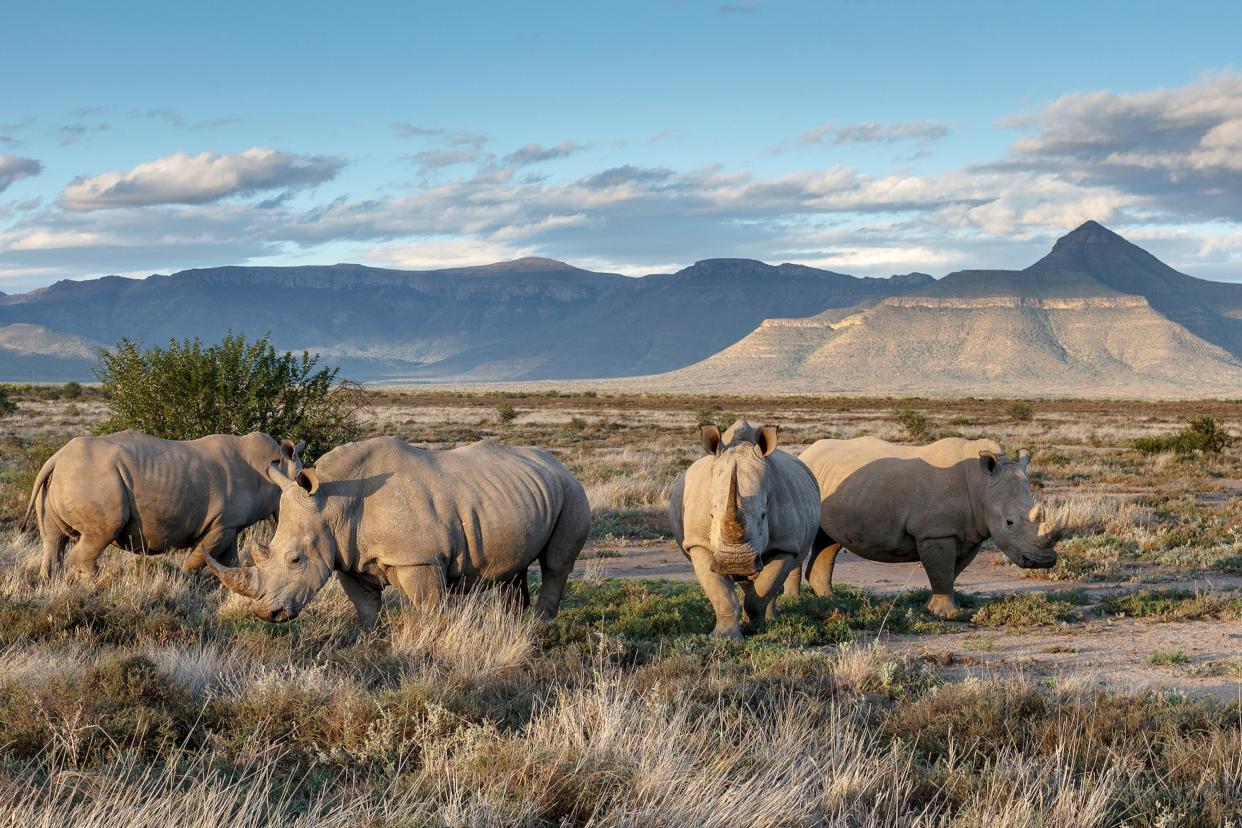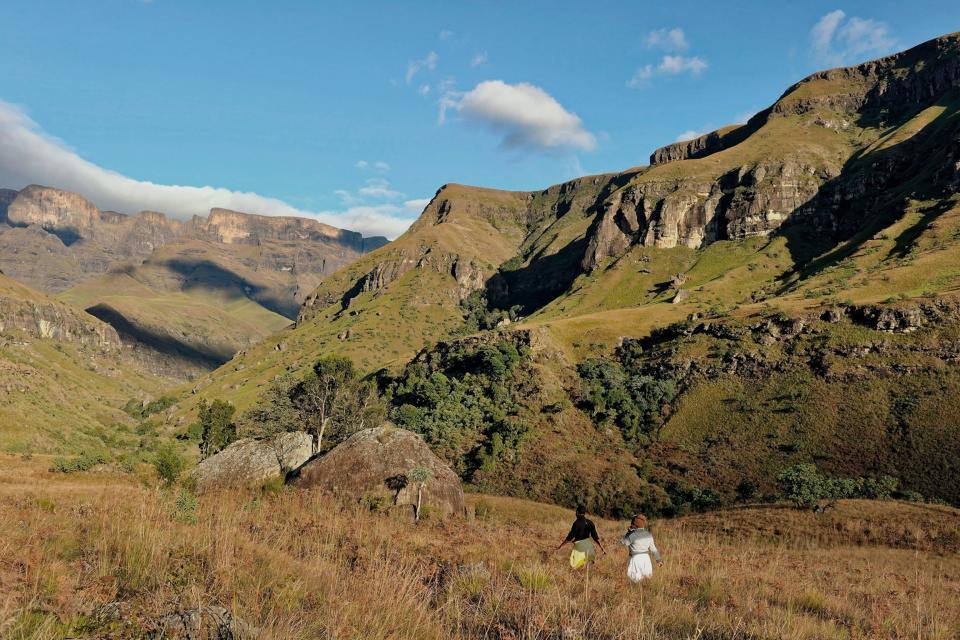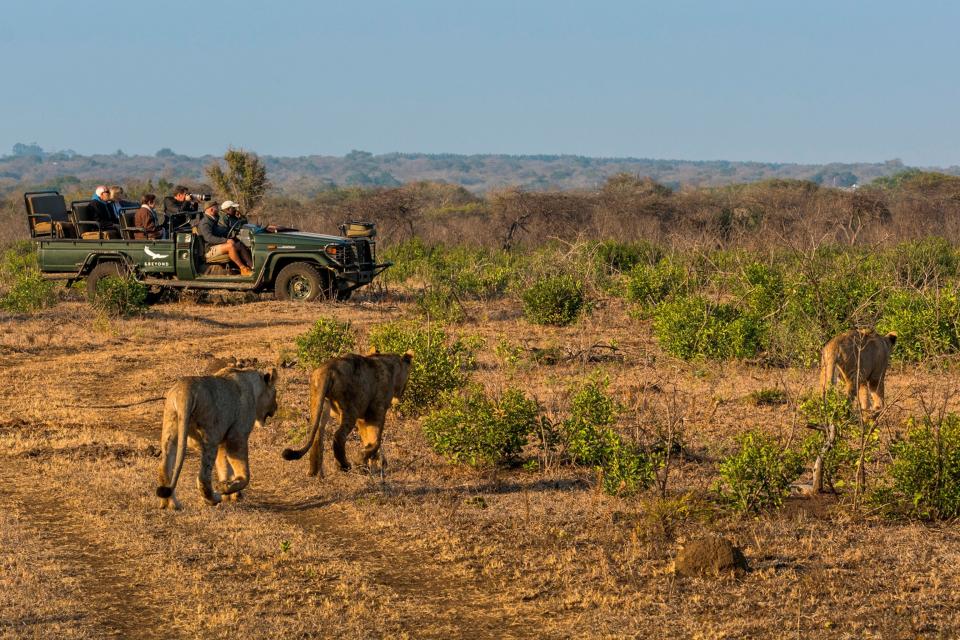
This article was produced by National Geographic Traveller (UK).
My fourth day on safari in Phinda Private Game Reserve, KwaZulu-Natal, starts much like any other. First, there’s the welcome jolt of a pre-dawn alarm. I splash cold water on my face, gulp down some coffee and get ready. Outside my cabin, the tetchy crowing of hadada ibises is met by thunder overhead: baboons, charging across the roof, onto the deck and away. Nyala antelopes gaze out from the sand forest as I join my group and, together, we pad through the half-light to our open-topped safari vehicle. So far, so normal. But soon, normality will recede, and something extraordinary will take its place.


We’re about to join a team of rhino experts in the field, so it’s essential that we’re up and out early, while it’s still cool. There’s a slight mist in the air, and the forest’s giant Lebombo wattle trees loom like ghosts over the track. Emerging into open grassland dotted with shrubs, our guide pulls up at our meeting place. Phinda is part of Munywana Conservancy, a stronghold for rhinos, and this morning we have the privilege of encountering some of the people charged with saving them from harm.
Munywana’s elite team of wildlife vets, ecologists and conservationists never wished to find themselves on the frontline of a war on poaching, but that’s what’s come to pass. In early 2024, Barbara Creecy, South Africa’s environment minister, confirmed that rhino poaching’s global epicentre had shifted from South Africa’s Kruger National Park to KwaZulu-Natal, with annual losses up 10% in 2023.
Despite campaigns trying to devalue rhino horn as a status symbol in parts of East Asia and debunk the myth that it has medicinal value, there’s not much sign of the black market collapsing. Faced with this bleak reality, AndBeyond, the conservation tourism company that’s managed Phinda since 1991, is doing everything in its power to safeguard its rhinos. In this beautiful reserve — a former pineapple plantation, painstakingly rewilded — every rhino helps keep the ecosystem in balance.


Eyes on the ground are important, so every tourist has a part to play. AndBeyond does far more than just offering wildlife watching drives. It uses technology to monitor each of the reserve’s rhinos, requires its staff to have exceptionally high integrity and recruits local community members as intelligence gathers, security guards and tracker dog handlers, specifically to keep poachers at bay.
Conservancy warden Dale Wepener explains the operation that we’re to witness this morning. “Running a reserve has become a bit like shark cage diving,” he says. “You have to be well resourced, well organised and well prepared. Because if there’s a break in the cage, they — the criminals — will be in.”
Crucially and somewhat controversially, as a deterrent, Munywana Conservancy surgically removes the horns of each of its rhinos once they reach young adulthood.
“Deciding we had to remove our rhinos’ horns wasn’t easy, but it’s quick, it’s painless and it’s worth it”, says Dale. “In the current climate, de-horning a rhino gives it a 96% higher chance of survival to old age.” The reserve’s chief wildlife vet takes great care to sedate the rhinos before proceeding; poachers, by contrast, would simply kill them.
Briefing complete, the team take up their positions. Their target is a young male black rhino, singled out the day before. From the moment he sinks to his knees in the long grass — expertly darted from a helicopter — every second counts. This youngster has never been microchipped, blood-tested, measured, ID-marked and de-horned before, and there’s much to do.
Rushing to the scene in a fleet of 4WD vehicles, the team springs into action. Quickly and calmly, they check that the morphine-based sedative has taken hold, then shift the rhino into a comfortable position, inviting us forward to watch. Next, they soothe his senses with improvised ear plugs — a pair of loosely stuffed socks — and a soft eye bandage. Somebody steps forward with a jerrycan of cool water, and gently soaks his back.
Amid the flurry comes the whirr of the chainsaw and the scent of horn shavings: musty, like toenail clippings on a hot day. Quick as a flash, an ecologist stashes the horn for safekeeping; it’s destined for AndBeyond’s vault. Just as important, but just as hard to witness, is the clip of the ear-notcher, marking out a combination that spells out the youngster’s new ID number.
Encouraged to step even closer, I give the rhino’s warm, dusty shoulders a tender rub, feeling a knot of emotions inside. I’ve been lucky enough to see rhinos many times on my visits to South Africa, but nothing can compare to this. Drastic though today’s interventions seem, I’m convinced it’ll help protect the youngster from harm. And later, as we watch him scurry back to his mother, I feel hope blossom that here at least, I’m witnessing a black rhino destined for a long life.
Published in the Middle East & Africa Collection 2024, distributed with the August 2024 issue of National Geographic Traveller (UK).
To subscribe to National Geographic Traveller (UK) magazine click here. (Available in select countries only).







